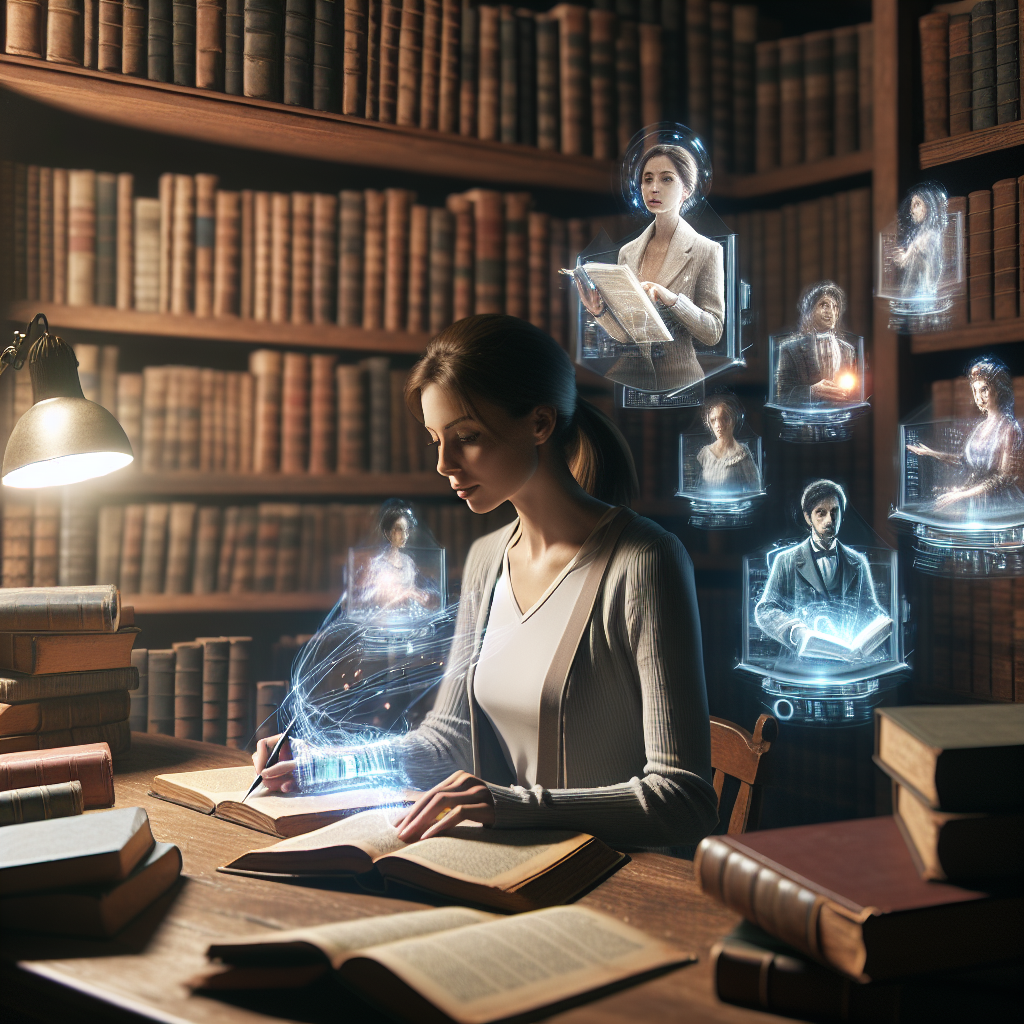Artificial Intelligence (AI) has revolutionized many industries, from healthcare to finance, and now it is making its mark on the world of storytelling. AI is being used to create compelling narratives in various forms, from books to movies to video games. The ability of AI to analyze data and generate content has opened up new possibilities for storytelling, enabling creators to produce unique and engaging narratives.
AI and storytelling go hand in hand, as both are fundamentally about communication and engaging an audience. By harnessing the power of AI, storytellers can enhance their creativity, streamline their workflow, and reach a wider audience. In this article, we will explore the ways in which AI is transforming the art of storytelling and creating new opportunities for creators.
How AI is Transforming Storytelling
AI is revolutionizing storytelling in several key ways:
1. Content Generation: AI can analyze vast amounts of data to generate content, such as articles, scripts, and even entire novels. This ability to generate content at scale enables creators to experiment with new ideas and quickly iterate on their work.
2. Personalization: AI can analyze user data to personalize content based on the preferences and interests of individual users. This enables creators to tailor their stories to specific audiences, increasing engagement and retention.
3. Storytelling Algorithms: AI algorithms can analyze the structure and elements of successful stories to identify patterns and trends that resonate with audiences. This enables creators to optimize their storytelling techniques and create more compelling narratives.
4. Interactive Storytelling: AI-powered chatbots and virtual assistants can engage users in interactive storytelling experiences, where users can interact with characters and shape the outcome of the story. This interactive element adds a new dimension to storytelling and enhances user engagement.
5. Translation and Localization: AI can translate and localize stories into multiple languages, enabling creators to reach a global audience. This expands the reach of storytelling and enables creators to connect with diverse audiences around the world.
AI Tools for Storytelling
There are several AI tools and platforms that creators can use to enhance their storytelling:
1. GPT-3: OpenAI’s Generative Pre-trained Transformer 3 (GPT-3) is a powerful language model that can generate human-like text based on a prompt. Creators can use GPT-3 to generate dialogue, plot points, and character descriptions for their stories.
2. Plotagon: Plotagon is an AI-powered storytelling platform that enables creators to create animated videos with customizable characters, settings, and dialogue. Creators can use Plotagon to bring their stories to life in a visually engaging format.
3. Narrativa: Narrativa is an AI platform that can generate personalized content for marketing and storytelling purposes. Creators can use Narrativa to generate articles, social media posts, and other forms of content tailored to specific audiences.
4. ChatGPT: ChatGPT is a chatbot platform powered by GPT-3 that enables creators to create interactive storytelling experiences. Creators can use ChatGPT to engage users in conversations with virtual characters and guide them through interactive storylines.
Challenges and Considerations
While AI offers many opportunities for creators to enhance their storytelling, there are also challenges and considerations to keep in mind:
1. Ethics: Creators must consider the ethical implications of using AI in storytelling, such as the potential for bias in AI-generated content and the impact on human creativity. Creators should be mindful of these considerations and ensure that their use of AI aligns with ethical standards.
2. Quality Control: AI-generated content may not always meet the same quality standards as human-generated content. Creators should carefully review and edit AI-generated content to ensure that it meets their creative vision and resonates with their audience.
3. User Experience: Creators should consider the user experience when incorporating AI into storytelling. Interactive storytelling experiences should be intuitive and engaging, and AI-generated content should enhance, rather than detract from, the overall storytelling experience.
4. Adaptability: Creators should be prepared to adapt to the rapidly evolving landscape of AI and storytelling. New AI tools and platforms are constantly being developed, and creators should stay informed about the latest trends and technologies to remain competitive in the industry.
FAQs
Q: Can AI replace human storytellers?
A: While AI can generate content and assist in the storytelling process, it cannot replace the creativity, emotion, and intuition of human storytellers. Human storytellers bring a unique perspective and voice to their work that AI cannot replicate.
Q: How can creators use AI to enhance their storytelling?
A: Creators can use AI to streamline their workflow, generate content, personalize stories, optimize storytelling techniques, and engage audiences in interactive experiences. By leveraging AI tools and platforms, creators can enhance their creativity and reach a wider audience.
Q: What are some examples of AI-powered storytelling?
A: Examples of AI-powered storytelling include AI-generated novels, interactive chatbots, personalized content, and animated videos created with AI platforms. Creators across various industries are experimenting with AI to enhance their storytelling and engage audiences in new and innovative ways.
Q: How can creators ensure the ethical use of AI in storytelling?
A: Creators should be mindful of the potential for bias in AI-generated content, the impact on human creativity, and the ethical implications of using AI in storytelling. Creators should adhere to ethical standards and guidelines in their use of AI to ensure that their storytelling aligns with ethical considerations.
In conclusion, AI is transforming the art of storytelling by enabling creators to generate content, personalize stories, optimize techniques, and engage audiences in interactive experiences. By harnessing the power of AI, creators can enhance their creativity, streamline their workflow, and reach a wider audience. While there are challenges and considerations to keep in mind, the opportunities for creators to leverage AI in storytelling are vast and exciting. As AI continues to evolve, so too will the possibilities for storytelling, creating new and innovative ways for creators to connect with audiences and share their stories.

